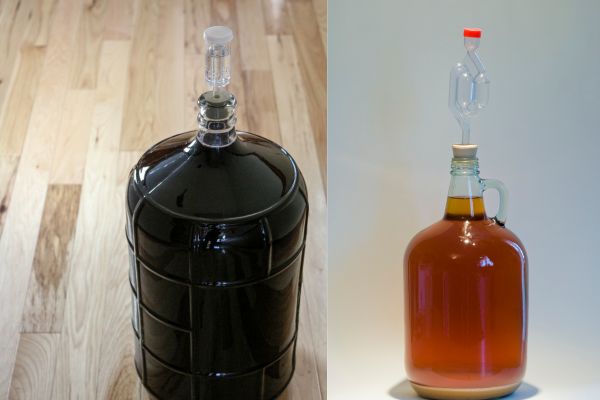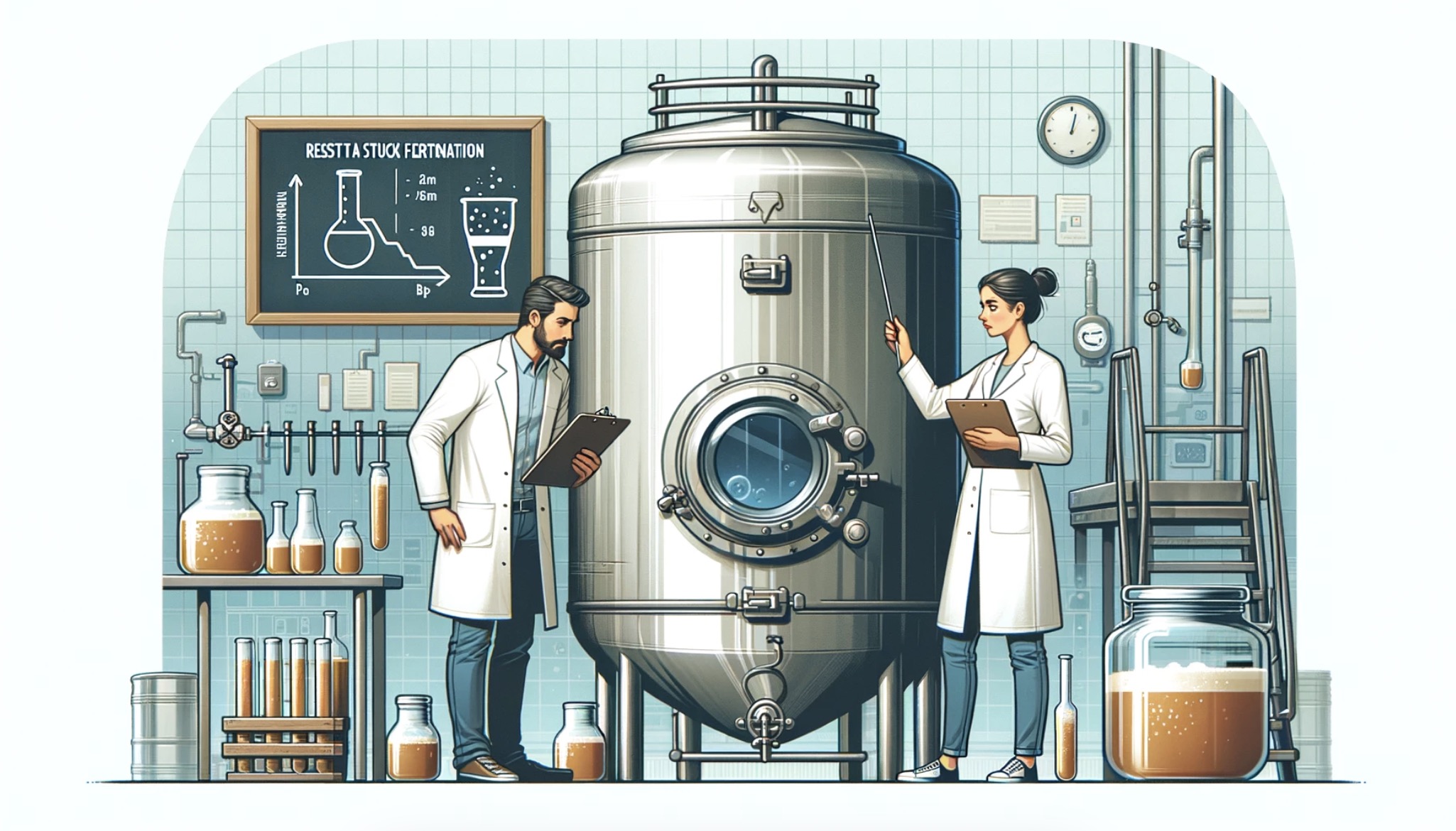The question “how long can you keep beer in a secondary fermenter?” is one that every home brewer will face at some point in their brewing journey. It’s a question I’ve grappled with throughout my own brewing experience, and the answer is both simple and complex.
In general, you can keep beer in a secondary fermenter for anywhere from a few days to a few months.
However, the exact length of time depends on a variety of factors, including the beer style, the brewing process, and the brewer’s personal preferences.
In this detailed post, I’ll explore these factors in depth, drawing on my own personal experiences and expertise as a seasoned home brewer.
The Purpose of Secondary Fermentation
Secondary fermentation is a critical step in the brewing process. It is the stage where your beer is transferred from the primary fermenter into a secondary vessel. This allows for the beer to clear, mature, and develop its full range of flavors.

Clearing the Beer
During primary fermentation, a lot of sediment is produced as the yeast consumes the sugars in the wort. By transferring the beer to a secondary fermenter, you allow this sediment to settle, resulting in a clearer, more attractive beer.
Maturation and Flavor Development
Secondary fermentation also allows your beer to mature and develop its full range of flavors. This is particularly important for complex beers like stouts or IPAs, which can benefit from a longer secondary fermentation period.
The Type of Beer You’re Brewing
The type of beer you’re brewing can significantly influence how long you leave it in the secondary fermenter.
Ales
Ales, for instance, are top-fermented beers that ferment quickly. Most ales will only need a week or two in the secondary fermenter. Any longer and you risk over-maturing the beer, which can lead to off-flavors.

Lagers
Lagers, on the other hand, are bottom-fermented beers that ferment slowly. They can benefit from a longer secondary fermentation period, often several weeks to a couple of months. This allows the beer to fully clear and develop its characteristic clean, crisp flavors.
The Brewing Process
The brewing process itself also plays a role in determining how long to leave beer in a secondary fermenter.
Yeast Strains
Different yeast strains work at different rates. Some yeast strains ferment quickly, meaning your beer will be ready to transfer to the secondary fermenter sooner. Other strains work more slowly, meaning a longer secondary fermentation period may be necessary.
Fermentation Conditions
The conditions under which you ferment your beer can also influence how long it needs to remain in the secondary fermenter. Factors such as temperature, pressure, and the presence of oxygen can all play a role.
Personal Preferences
Finally, personal preferences play a significant role in determining how long to leave beer in a secondary fermenter.
Flavor Preferences
As a home brewer, you have the luxury of brewing to your own taste. If you prefer a beer with a cleaner, crisper flavor, you might opt for a shorter secondary fermentation period. If you prefer a beer with more complex flavors, a longer secondary fermentation period could be beneficial.
Patience
Patience is a virtue in home brewing. Some brewers prefer to get their beer bottled as quickly as possible, while others enjoy the anticipation of a longer fermentation process.
Conclusion
So, how long can you keep beer in a secondary fermenter? The answer is largely dependent on the type of beer you’re brewing, the brewing process, and your own personal preferences. As a general rule, you can keep beer in a secondary fermenter for anywhere from a few days to a few months.
Here are 10 key takeaways from this post:
1. Secondary fermentation is a critical step in the brewing process that allows for beer to clear, mature, and develop flavors.
2. The type of beer you’re brewing significantly influences the length of secondary fermentation.
3. Ales generally require a shorter secondary fermentation period, while lagers benefit from a longer period.
4. The brewing process, including the yeast strain and fermentation conditions, play a role in determining secondary fermentation length.
5. Personal preferences, including flavor preferences and patience, also impact how long to leave beer in the secondary fermenter.
6. Clearing the beer and maturation are the two primary goals of secondary fermentation.
7. Over-maturing a beer can lead to off-flavors.
8. Different yeast strains work at different rates, impacting the fermentation timeline.
9. Fermentation conditions such as temperature, pressure, and oxygen presence can influence secondary fermentation length.
10. As a home brewer, you have the freedom to brew to your own taste and patience level.
FAQs
How long should second fermentation be?
The duration of second fermentation can vary depending on personal preference and the desired outcome. Generally, it is recommended to let the fermentation process continue for 1 to 3 days. However, this can be adjusted based on factors such as temperature, desired level of carbonation, and flavor development. It is advisable to regularly monitor the progress by tasting the beverage to determine the optimal fermentation duration.
How long is secondary fermentation homebrew?
Secondary fermentation in homebrewing typically lasts for about one to two weeks, although the exact duration can vary depending on factors such as the specific recipe, yeast strain, and desired flavor profile.
Is it bad to leave beer in fermenter too long?
Leaving beer in the fermenter for too long can have some negative effects. As the beer sits on the yeast for an extended period, it can develop off-flavors and aromas, such as a yeasty or “autolyzed” character. Additionally, the beer may become oxidized, resulting in a stale or cardboard-like taste. It is generally recommended to transfer the beer to a secondary vessel or bottle it once fermentation is complete to avoid these issues.
How do you speed up secondary fermentation?
To speed up secondary fermentation, you can follow a few key steps. Firstly, ensure that the primary fermentation is complete before moving to the secondary stage. This will help prevent any potential issues during the process. Next, consider increasing the temperature slightly within the recommended range for the specific fermentation. Warmer temperatures can expedite fermentation but be cautious not to exceed the optimal range as it may affect the flavor profile. Additionally, gently stirring or agitating the fermenting liquid can help distribute yeast and oxygen, facilitating faster fermentation. Lastly, using a yeast nutrient or energizer can provide essential nutrients to the yeast, promoting a quicker fermentation process.
Does it hurt to leave beer in fermenter too long?
Leaving beer in the fermenter for too long can have some negative effects. Over time, the beer may develop off-flavors, lose its freshness, and become oxidized. Additionally, if the beer remains in contact with the yeast for an extended period, it can lead to autolysis, where the yeast cells break down and release undesirable compounds. It is generally recommended to transfer the beer to a secondary vessel or bottle it within a reasonable timeframe to avoid these potential issues.
How long should I leave my beer in secondary fermenter?
The duration for leaving your beer in a secondary fermenter can vary depending on the specific beer style and your desired outcome. In general, it is recommended to leave your beer in secondary fermentation for about 1-2 weeks. This allows for further clarification, maturation, and flavor development. However, for certain styles like hop-forward beers or lighter ales, you may choose to skip secondary fermentation altogether and proceed with bottling or kegging after primary fermentation is complete. Ultimately, it’s important to monitor the beer’s clarity and taste throughout the process to determine the ideal duration for your specific brew.




